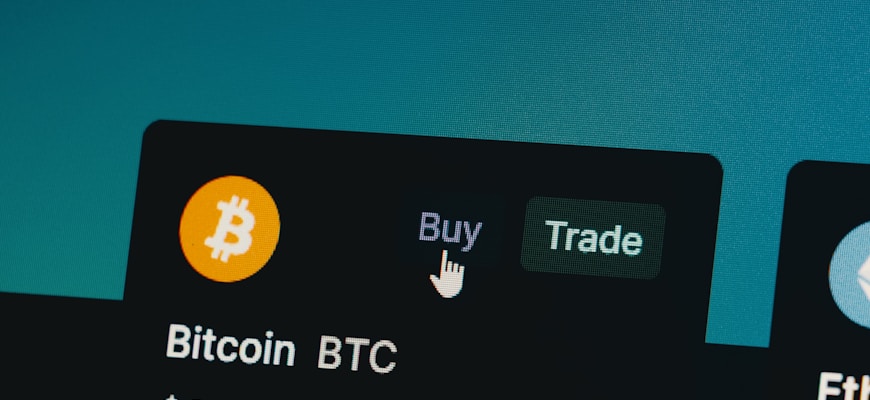Major Upgrades and Forks in Blockchain Networks

- Understanding the concept of forks in blockchain networks
- Types of major upgrades in blockchain technology
- The impact of hard forks on the blockchain ecosystem
- Case studies of successful network upgrades in blockchain
- Challenges and risks associated with forking in blockchain networks
- How to navigate through a blockchain network upgrade
Understanding the concept of forks in blockchain networks
In the realm of blockchain technology, forks play a crucial role in the evolution and development of blockchain networks. Forks occur when there is a fundamental change in the protocol of a blockchain, resulting in a split in the network. This can happen for various reasons such as implementing new features, fixing bugs, or addressing security vulnerabilities.
There are two main types of forks in blockchain networks: hard forks and soft forks. A hard fork is a permanent divergence from the previous version of the blockchain, where nodes that do not upgrade to the new protocol are no longer able to participate in the network. On the other hand, a soft fork is a temporary split where nodes that have not upgraded can still validate transactions, but with limited functionality.
Understanding the concept of forks in blockchain networks is essential for participants in the ecosystem to navigate through major upgrades and changes effectively. By staying informed about upcoming forks and their implications, users can make informed decisions on how to proceed with their transactions and investments in the network. Additionally, being aware of the different types of forks can help users anticipate any potential disruptions or changes that may occur in the blockchain network.
Types of major upgrades in blockchain technology
There are several types of significant upgrades in blockchain technology that can enhance the functionality and efficiency of blockchain networks. These upgrades play a crucial role in improving security, scalability, and overall performance.
- Protocol upgrades: Protocol upgrades involve changes to the underlying rules and protocols governing the blockchain network. These upgrades are designed to address vulnerabilities, improve consensus mechanisms, and enhance network efficiency.
- Consensus algorithm upgrades: Consensus algorithm upgrades focus on improving the way nodes in the network agree on the validity of transactions. By upgrading the consensus algorithm, blockchain networks can achieve greater decentralization, security, and scalability.
- Smart contract upgrades: Smart contract upgrades involve enhancements to the code that automates and enforces the execution of contracts on the blockchain. These upgrades can introduce new features, fix bugs, and enhance the overall functionality of smart contracts.
- Privacy upgrades: Privacy upgrades aim to enhance the anonymity and confidentiality of transactions on the blockchain. By implementing advanced cryptographic techniques, blockchain networks can offer users greater privacy and security.
Overall, major upgrades in blockchain technology are essential for keeping blockchain networks up to date and competitive in the rapidly evolving digital landscape. By implementing these upgrades, blockchain networks can continue to deliver secure, efficient, and innovative solutions for various industries and use cases.
The impact of hard forks on the blockchain ecosystem
The impact of **hard forks** on the **blockchain ecosystem** is a significant event that can shape the future of a **blockchain network**. **Hard forks** occur when there is a divergence in the **protocol** of a **blockchain**, leading to a split into two separate **blockchain** networks. This can result in the creation of a new **cryptocurrency** or the continuation of the original **cryptocurrency** with different **rules**. The effects of **hard forks** on the **blockchain ecosystem** can be both positive and negative, depending on various factors.
- One of the positive impacts of a **hard fork** is the **innovation** it can bring to the **blockchain network**. **Developers** may introduce new features and functionalities that were not possible before the **fork**. This can attract more **users** and **investors**, ultimately **boosting** the **value** of the **cryptocurrency**.
- On the other hand, **hard forks** can also lead to **confusion** and **uncertainty** among **users** and **investors**. The split in the **blockchain** can create **tension** and **disagreements** within the **community**, potentially **weakening** the **overall** **consensus**.
- Additionally, **hard forks** can **fragment** the **network**, leading to a **reduction** in **security** and **efficiency**. With **resources** being **divided** between the two **networks**, there is a **risk** of **weakening** the **blockchain ecosystem** as a whole.
In conclusion, **hard forks** play a crucial role in the **evolution** of **blockchain networks**. While they can bring **innovation** and **improvements**, they also come with **challenges** and **risks**. It is essential for **developers** and **community members** to **collaborate** and **navigate** through **hard forks** carefully to ensure the **sustainability** and **growth** of the **blockchain ecosystem**.
Case studies of successful network upgrades in blockchain
Case studies of successful network upgrades in blockchain showcase the importance of innovation and adaptation in the ever-evolving landscape of digital currencies. These upgrades not only demonstrate the resilience of blockchain networks but also highlight the collaborative efforts of developers and community members in implementing changes for the greater good.
One of the notable examples of a successful network upgrade is the Ethereum network’s transition from Proof of Work (PoW) to Proof of Stake (PoS) consensus mechanism. This upgrade, known as Ethereum 2.0, aims to improve scalability, security, and sustainability of the network. By incentivizing network participants to hold and stake their coins, Ethereum is paving the way for a more efficient and eco-friendly blockchain ecosystem.
Another case study worth mentioning is the Bitcoin network’s Segregated Witness (SegWit) implementation. This upgrade was designed to increase the block size limit, reduce transaction malleability, and improve overall network efficiency. By segregating transaction signatures from the main block, SegWit has paved the way for faster transaction processing and lower fees on the Bitcoin network.
These case studies underscore the importance of continuous improvement and adaptation in blockchain technology. By embracing change and staying ahead of the curve, blockchain networks can overcome challenges and thrive in the competitive digital landscape.
Challenges and risks associated with forking in blockchain networks
Forking in blockchain networks can present various challenges and risks that need to be carefully considered by developers and participants. These challenges can include network disruptions, security vulnerabilities, and community division. When a blockchain undergoes a fork, it can lead to a split in the community, where some users may not agree with the changes being implemented.
Another risk associated with forking is the potential for double-spending attacks, where malicious actors exploit the split in the network to manipulate transactions. This can undermine the integrity and trustworthiness of the blockchain, leading to a loss of confidence among users and investors.
Moreover, forking can also result in compatibility issues between different versions of the blockchain, causing confusion and inefficiencies in the network. Developers need to ensure that adequate measures are in place to address these issues and prevent any detrimental impact on the overall functionality of the blockchain.
Overall, while forking can be a necessary process for implementing upgrades and improvements in blockchain networks, it is essential to be aware of the challenges and risks involved. By carefully managing these risks and addressing potential issues proactively, developers can ensure a smooth transition during the forking process.
How to navigate through a blockchain network upgrade
During a major upgrade or fork in a blockchain network, it is essential to navigate through the changes effectively to ensure a smooth transition. Here are some key steps to help you navigate through a blockchain network upgrade:
- Stay Informed: Keep yourself updated on the latest developments regarding the network upgrade. Follow official announcements and updates from the blockchain project team to understand the changes that will be implemented.
- Backup Your Data: Before the network upgrade takes place, make sure to back up your data and private keys. This will help you protect your assets in case of any unforeseen issues during the upgrade process.
- Update Your Software: Ensure that you are using the latest version of the blockchain software that is compatible with the upcoming upgrade. This will help you avoid any disruptions in accessing the network post-upgrade.
- Monitor the Network: Keep an eye on the network status during and after the upgrade. Monitor block confirmations, transaction speeds, and network stability to ensure that everything is functioning as expected.
- Follow Community Guidelines: Engage with the blockchain community to gather insights and best practices for navigating through the network upgrade. Participate in forums, social media channels, and community discussions to stay informed.
By following these steps, you can effectively navigate through a blockchain network upgrade and ensure a seamless transition to the updated network. Stay informed, backup your data, update your software, monitor the network, and follow community guidelines to make the most of the network upgrade process.



